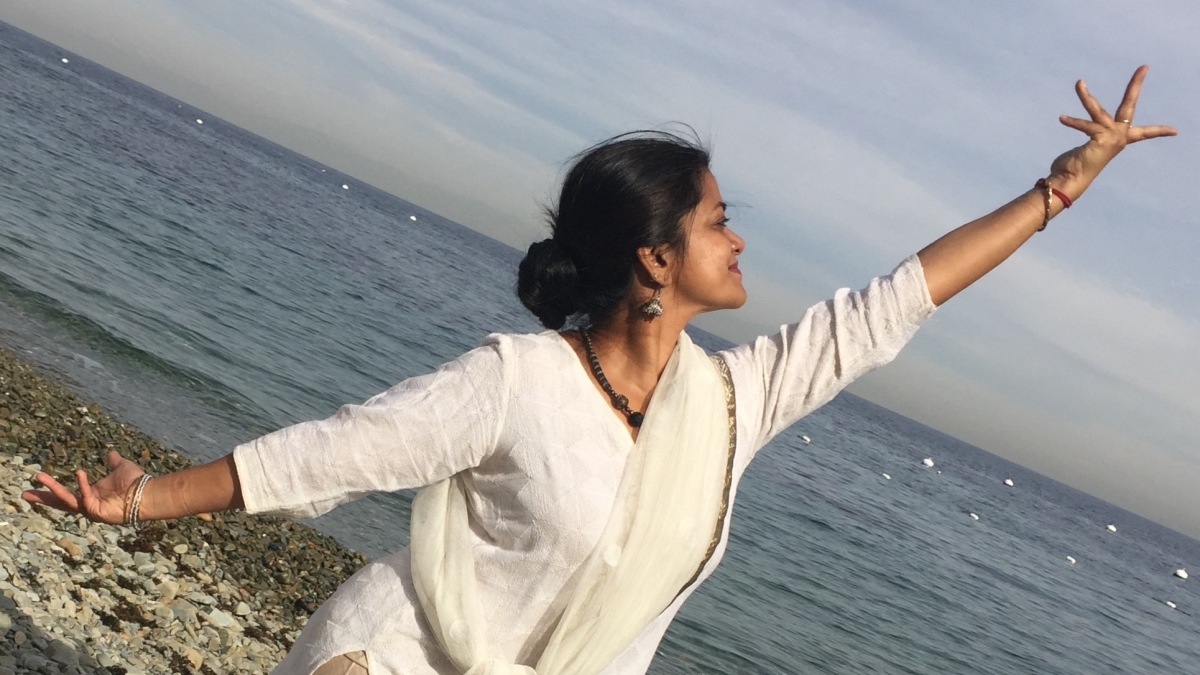For the love of dance: Graduate student holds onto dream of career in dance

Sumana Mandala
Editor's note: This story is part of a series of profiles of notable fall 2020 graduates.
Sumana Mandala graduated with her Master of Fine Arts in dance this December, two decades after she first looked into the possibility of studying dance at ASU.
“A career in dance did not suit the expectations of my family when I was starting to make career choices, but I kept coming back to it and made a career out of teaching dance and performing wherever I found myself,” Mandala said.
After attending high school in Scottsdale, Arizona, Mandala completed her BA in French and economics 23 years ago from the University of Virginia. She worked in Japan and studied dance in India. She was married and resided in Tempe, Arizona, for a short time, and eventually returned to Arizona after having lived in California, the United Kingdom, Texas and Wisconsin.
Mandala said she looked into the ASU dance program for the first time 20 years ago, and once she moved back to Arizona, it was the perfect time for her to finally take that next step in her dance education with the support of her family, attending college at the same time that her oldest son works on his college degree.
“As my teaching and performing experience grew, the urgency of delving deeper into my practice and my intentions became stronger, so that, by the time I returned to Scottsdale with my family, my husband felt the need for me to join grad school as much as I did,” she said, “and he's the one who actually made my initial application to grad school!”
Question: What’s something you learned while at ASU — in the classroom or otherwise — that surprised you or changed your perspective?
Answer: There are so many things that I learned, but one that has greatly affected my work and research was the idea that several professors iterated throughout my time here: You're in charge of your learning.
Discomfort was inevitable in my classes where I was trying so many new things, but when I made the decision to take charge and learn, the possibilities for me as a dance practitioner and teacher became endless. The professors made room for this by creating spaces of support and safety for experimentation and deeper exploration.
Having focused on research in dance pedagogy and civic engagement, this idea of having the student be in charge of their learning makes all the difference in the quality of the teaching-learning process.
Q: Why did you choose ASU?
A: It was providential that I had moved back to Arizona at a time that was crucial to me in my professional and personal life. Being a Bharata-Nrityam dancer, most dance programs in the U.S. were not suited to my practice. But ASU's program, based in creative practice, was practically made-to-fit. I was able to pursue research using my dance form, while exploring somatics and creative practices; the pedagogy aspect was significant to my research, as well.
The professors, with their vast expertise and experience, became indispensable guides in prompting me to delve deeper into my questions. They respected and catalyzed a greater understanding of my dance form, and also expanded my experience in other forms and especially in community and civic engagement. These connections opened many avenues in my research.
Q: Which professor taught you the most important lesson while at ASU?
A: I can truly say that all my teachers in the dance department taught by example. Their way of being in the teaching-learning process – being responsible, being accountable and being vulnerable – is the greatest and best lesson i have had while at ASU.
Q: What are your plans after graduation?
A: To develop the mission of my non-profit to use arts for creatively engaging the community to find solutions to issues of civic and social justice — especially women's empowerment and healthy relationships. And also to continue teaching Bharata-Nrityam with a more prominent activist lens to promote the same.
Q: If someone gave you $40 million to solve one problem on our planet, what would you tackle?
A: Women's empowerment, starting with healthy relationships from elementary school age to college, to violence prevention. My applied project addressed this through girls finding agency and voice in their bodies through their dance practice in my studio classes and through community coming together to listen to survivors of sexual and domestic violence in their call to make communities safer.
More Arts, humanities and education

2 ASU professors, alumnus named 2025 Guggenheim Fellows
Two Arizona State University professors and a university alumnus have been named 2025 Guggenheim Fellows.Regents Professor Sir…

No argument: ASU-led project improves high school students' writing skills
Students in the freshman English class at Phoenix Trevor G. Browne High School often pop the question to teacher Rocio Rivas.No,…

ASU instructor’s debut novel becomes a bestseller on Amazon
Desiree Prieto Groft’s newly released novel "Girl, Unemployed" focuses on women and work — a subject close to Groft’s heart.“I…

